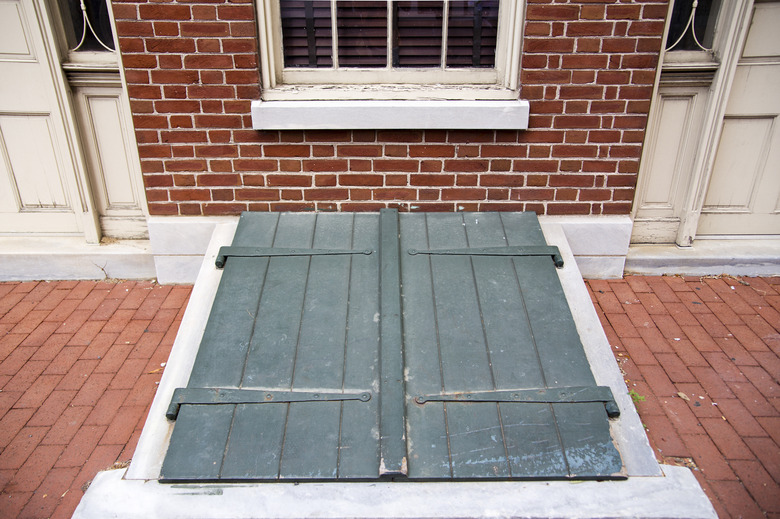How To Fix A Leaking Cellar Bulkhead
We may receive a commission on purchases made from links.
A bulkhead is a fairly common feature of a basement or cellar. It's a doorway set horizontally on the ground or at a low angle that opens to a stairway leading to the underground chamber. Because the opening has to be fairly wide to allow for easy transport of tools and materials, there are usually two doors that meet in the middle, and although they may be made of wood, they're usually metal because it's more weather-resistant.
When your bulkhead leaks, you need to correct the problem quickly because the last thing you need in the already humid environment of a basement is more water. Leaks can happen through the doors or through the bulkhead foundation, which is usually added onto the building foundation and sealed by a rubber cold joint. The first step in stopping the leak is to pinpoint the source.
Stop Leaks in the Bulkhead Foundation
Stop Leaks in the Bulkhead Foundation
When moisture seeps through the foundation, it may be getting through a crack, and if you determine this to be what's happening, you have to seal the crack. You can do this by applying waterproofing caulk to small cracks and hydraulic patching compound to larger ones. Do this on a dry day so the material has time to cure before it gets wet again.
You may notice moisture beading up on the sides of the foundation but no visible cracks. That usually points to a drainage problem; water is pooling around the edges of the foundation and combining with groundwater to create enough hydrostatic pressure to penetrate the concrete. You can usually solve this problem by directing runoff from the building's downspouts away from the bulkhead and/or installing a French drain system around the bulkhead perimeter.
Replace the Weatherstripping on the Door
Replace the Weatherstripping on the Door
If water is coming through the door, it's a good bet the weatherstripping has failed and needs to be replaced. You can determine which part of the weatherstripping has failed on the next rainy day by going into the cellar and noting where water is dripping. If you're going to replace some of the weatherstripping, though, you may as well replace all of it.
Self-adhesive rubber weatherstripping works best. Remove all the old weatherstripping, scraping it off with a putty knife if necessary, and then clean the metal with acetone or alcohol to remove all the residue. Cut the new weatherstripping to length with scissors, remove the backing, and press it into place. This should also be done on a dry day, as the material doesn't stick well to wet metal.
Repair or Replace the Door
Repair or Replace the Door
Sometimes water can seep through joints and bolt holes on the doors themselves. You may be able to solve this problem by applying a clear sealant to the inside and outside of each door. Apply one coat, let it dry, and then apply more to parts of the door where water was visible.
If the doors are old enough to have developed rust holes, you might want to consider replacing them. If there are just one or two rusty holes, though, filling them with a two-part auto body filler is easier and may buy several years before the doors actually do need to be replaced. Clean off the rust with a rust inhibitor before applying the filler. After you trowel on the filler and sand it down, you'll probably want to apply a fresh coat of metal primer and weather-resistant metal paint.
